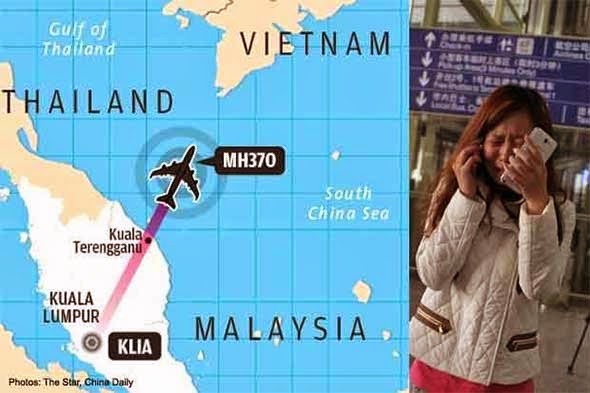| Online: | |
| Visits: | |
| Stories: |
The mystery of missing Malaysia Airlines flight MH370
MH370, the Malaysia Airlines flight with 227 passengers and 12 crew disappeared less than an hour into its journey from Kuala Lumpur to Beijing last weekend (March 8, 2014).
How, in this high-tech age of uber-surveillance, in which hundreds of satellites sweep the Earth and modern aircraft have multiple communications systems with triple redundancies, can a plane vanish?
Six days after it disappeared, despite a hunt involving more than 80 vessels and aircraft, no debris has been found in the South China Sea, over which the plane disappeared, or the Strait of Malacca.
”This is quite unprecedented,” says Ann Williamson, a professor of aviation safety at the University of NSW. ”We are talking about a demonstrably safe aircraft, an airline with a good safety record, and a very experienced pilot. After this amount of time, I think it’s fair to conclude they have been looking in the wrong place.”
Indeed, confirmation on Friday that an extra search area had been opened in the Indian Ocean, some 1000 kilometres west from where last contact was made with the plane, indicates as much. The expanded search was based on new but ”not necessarily conclusive” information, White House spokesman Jay Carney said. Inconclusive information has defined the investigation into the disappearance of MH370, but there are some facts.
Read more »
Source: http://www.riseearth.com/2014/03/the-mystery-of-missing-malaysia.html





